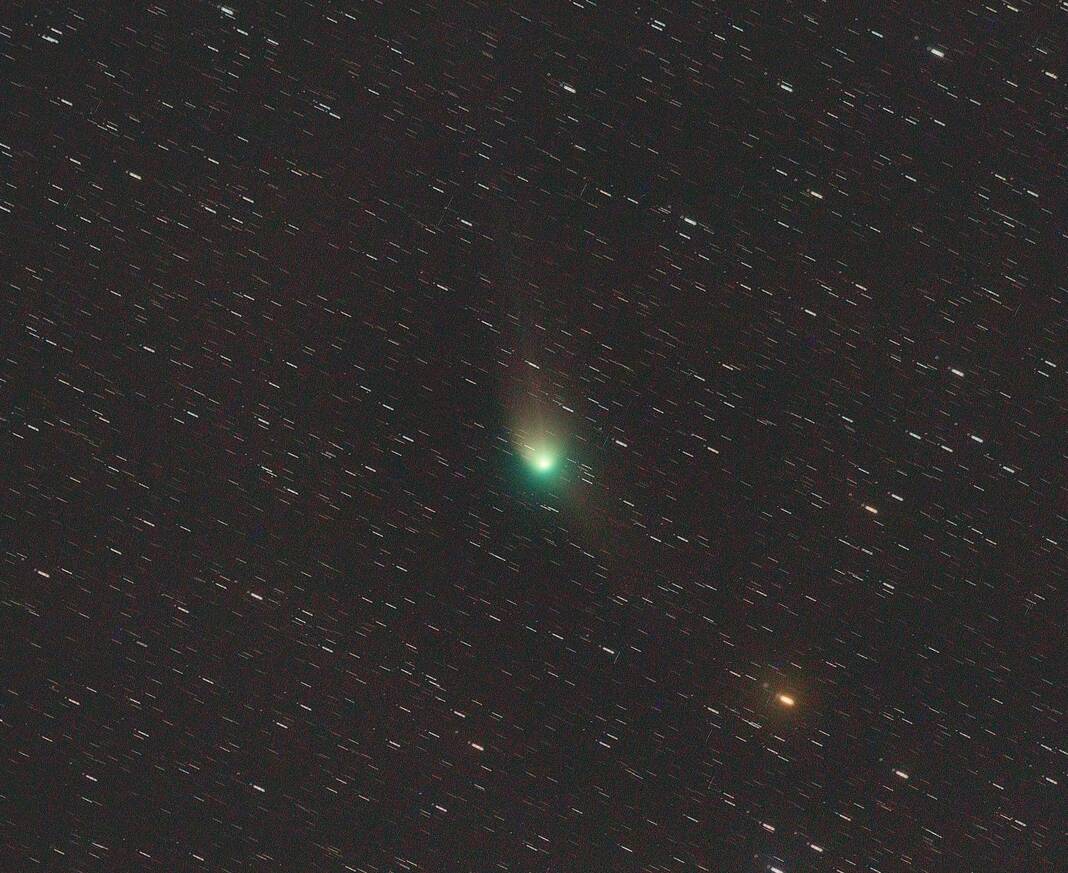
The South Texas Astronomical Society will host a comet-watching party Friday night at Resaca de la Palma State Park to view the passage of Comet C/2022 E3 (ZTF) as it zooms past Earth.
The comet reached its perigee, or closest point to the Earth, on Thursday. But the last few days of cloudy skies should dissipate by Friday, opening up a viewing window in our northern skies.
Victor De Los Santos, executive director of the astronomical society, says the next three nights look “horrible” cloud-wise.
“But it looks like Friday will be a lot better,” he added.
De Los Santos said the comet party will be held outside the front gates of the park Friday beginning at 8 p.m. No entry fee will be required.
“I can confirm the comet is no longer in an orbit where you need to stay up until two, three in the morning,” he said. “It’s what’s called circumpolar, which means that it’s orbiting very near Polaris the North Star, so it is going to be visible all night.”
The moon may be a problem, particularly for viewers trying to see the comet with the naked eye. The moon is waxing gibbous, about 95 percent full, and won’t set until Saturday until after 6 a.m.
“If you’re trying to look at it with the naked eye with no telescope or binoculars, it will definitely make it harder,” De Los Santos said. “But if you have a telescope or binoculars, there’s still a good amount of hope.”
De Los Santos said the society will be bringing two telescopes and a pair of binoculars, but other optics should be available from others in attendance.
“Usually people will bring out their own telescopes during those star parties and everybody shares them, everybody’s usually pretty nice,” he said.
Amateur astronomer Tom Hopkins of Harlingen has been tracking this comet for about a month and other comets for more than 45 years.
“I’ve been doing it for a long time. My first comet I saw in 1976 and the next one after that was ’86. And I think I really started going into it in the early ‘90s,” he said.
Hopkins has been observing and photographing Comet C/2022 E3 ZTF and has some tips on optimal viewing of the phenomenon, which looks like a fuzzy, green blur.
“They’ll need a clear view of the north, because right now it’s between the Little Dipper, which has the star Polaris in it, and the Big Dipper,” he said. “And, of course, the darker the better, and I would definitely use binoculars.”
Hopkins has made field trips east of Raymondville trying to minimize light pollution for the best comet and photographic experience.
He said now the comet comes above the horizon to the north at about 7 p.m., although he also concedes moon-glow is going to be a problem Friday night.
He adds that early-morning hours may be best as the moon drops down in the sky before setting.
The moon issue aside, weather-wise Friday will be a good night to view the comet since skies will be mostly clear.
But it will be chilly. Forecasts for the Brownsville and Harlingen areas put overnight lows Friday at 43 to 45 degrees, with temperatures dropping to 40 degrees in McAllen.
Comet C/2022 E3 ZTF probably originated in a debris filed called the Oort Cloud at the far reaches of the solar system. The last time it zoomed past Earth was 50,000 years ago.




